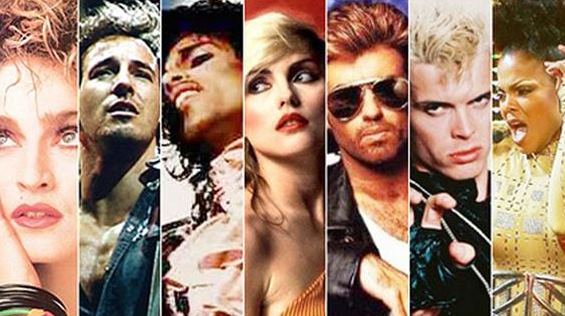A new year means more albums hitting the big 50. Like in 2023, this preview is based on a review of Wikipedia and an initial selection of 40 studio albums that appeared over the course of 1974. From there, I narrowed it down to six favorites, each of which are briefly highlighted, followed by a Spotify playlist that captures one song from each of the 40 albums, except for Joni Mitchell. I’m planning individual, more in depth posts about the six picks and possibly a few more, all timed to each album’s anniversary date.
Joni Mitchell – Court and Spark (January 17, 1971)
Kicking off this preview is Court and Spark, the sixth studio album by singer-songwriter Joni Mitchell, one of the many outstanding artists hailing from the Land of the Maple Leaf. Not only did Court and Spark become Mitchell’s most successful album, but it also marked the start of her transition from a “straight folkie” to an artist who incorporated jazz elements in her music. Court and Spark featured prominent guests from both the jazz and other music realms, such as pianist Joe Sample (co-founder of The Jazz Crusaders), jazz bassist Max Bennett, session guitarist Larry Carlton and The Band’s Robbie Robertson. Here’s Trouble Child, which like all other except for one track was penned by Mitchell.
Steely Dan – Pretzel Logic (February 20, 1974)
While my favorite Steely Dan album will always remain Aja, there’s a lot more to the Dan than their September 1977 gem. Every time I see Good Stuff, an outstanding tribute led by my dear friend Mike Caputo, I’m reminded how great their earlier music was as well. Case in point: Pretzel Logic, their third studio album and final as a standing band featuring Donald Fagen (keyboards, saxophone, vocals), Walter Becker (bass, guitar, backing vocals), Denny Dias (guitar) and Jim Hodder (drums). That said, Hodder only sang backing vocals on one track, and the album had significant contributions from many prominent L.A. session musicians, already foreshadowing the approach Fagen and Becker would take starting with the next Steely Dan album Katy Lied. Here’s the excellent Night by Night, which has become one of my favorite Dan songs pre-Aja.
Lynyrd Skynyrd – Second Helping (April 15, 1974)
With (Pronounced ‘Lĕh-‘nérd ‘Skin-‘nérd), the Southern rockers had released a strong debut in August 1973, which not only charted in the U.S. and Canada, but also overseas in the UK and Switzerland. While their follow-on Second Helping included what arguably is their signature song, Sweet Home Alabama, which became their first charting single and a major hit at home and elsewhere, the album missed the charts overseas. That said, it did better in the U.S. and Canada than their debut, peaking on the mainstream charts at no. 12 and no. 9, respectively. Here’s Don’t Ask Me No Questions, a great rocker co-written by guitarist Gary Rossington and lead vocalist Ronnie Van Zant. The horns by Bobby Keys, Trevor Lawrence and Steve Madaio give it a nice soul vibe!
Eric Clapton – 461 Ocean Boulevard (July 1974)
461 Ocean Boulevard, one of my favorite albums by Eric Clapton, marked his triumphant return to music after a 3-year hiatus due to heroin addiction. It also represented a clear break from Clapton’s hardcore blues rock-oriented days with John Mayall & The Bluesbreakers, The Yardbirds, Cream and Derek and the Dominos – all music I love as well. Sadly, his struggles with addiction weren’t over, and he would soon replace heroin with alcohol before finally getting sober in 1987. Here’s the fantastic Let It Grow, one of three tracks on the album Clapton wrote or co-wrote.
Supertramp – Crime of the Century (October 25, 1974)
Supertramp are a band I will always associate with my school days back in Germany, which in the U.S. would have been the equivalent to middle school. The English group became very popular in Germany, especially when they released their Breakfast in America album that topped the charts there and in many other countries. Crime of the Century, their third studio album, predated Breakfast in America by about 4.5 years. The song I best remember hearing on the radio is the opener School. Like all other tracks, it was co-written by Rick Davies (vocals, keyboards, harmonica) and Roger Hodgson (vocals, guitar, pianos). Typically, both alternated lead vocals, which in this case were sung by Hodgson.
Genesis – The Lamb Lies Down On Broadway (November 22, 1974)
This brings me to the final album I’d like to highlight in the post’s main section: The Lamb Lies Down On Broadway, the sixth studio album by Genesis. The British group became one of the few progressive rock acts I warmed to in the ’80s. I had always liked The Carpet Crawlers, which I had well known from the radio. Interestingly, according to Wikipedia, the song missed the charts everywhere, which I find hard to believe. The Lamb Lies Down On Broadway was a concept album telling the strange story of a poor Puerto Rican boy from The Bronx, who goes on a bizarre adventure in New York City, which ends in death. That said, musically, the group’s final album with original lead vocalist Peter Gabriel remains a gem, IMHO. Here’s the title track credited to all five members of the band: Gabriel (lead vocals), Steve Hackett (electric guitars), Tony Banks (piano), Mike Rutherford (bass) and Phil Collins (drums, bell-tree, glockenspiel, triangle, wind chimes, tambourine, timbales, backing vocals).
Here’s the above-mentioned Spotify playlist. It doesn’t include Trouble Child by Joni Mitchell who in January 2022 removed her music in solidarity with Neil Young to protest the platform for hosting Joe Rogan’s podcast, which spread dangerous misinformation about COVID-19.
Sources: Wikipedia; YouTube; Spotify













